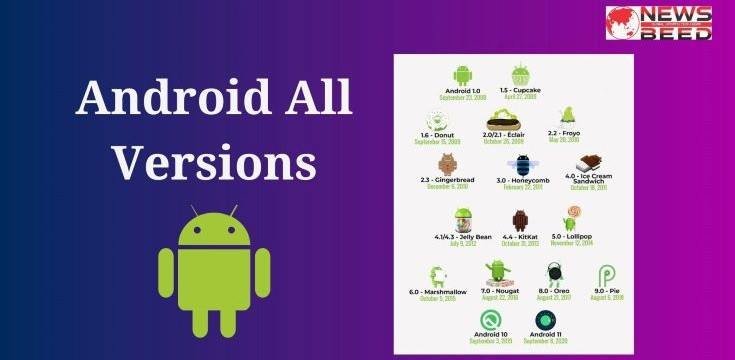Android, the world’s most widely used mobile operating system, has come a long way since its inception. Since its release in 2008, Android has continued to evolve, introducing new features, enhancements, and exciting version names. In this blog, we’ll take you on a journey through the history of Android and its various version names, exploring the key features and improvements in each release.
I. The Birth of Android
-
Android’s Humble Beginnings Android Inc. was founded in October 2003 by Andy Rubin, Rich Miner, Nick Sears, and Chris White. Their goal was to create an advanced operating system for digital cameras, but their vision soon expanded to include mobile devices.
-
Google’s Acquisition of Android In August 2005, Google acquired Android Inc., setting the stage for Android’s transformation into a mobile operating system.
II. Android Version Names and Their Evolution
-
Android 1.0 – “Astro” (2008)
- The first commercial Android release
- Features: Gmail integration, Google Maps, and a web browser
- Limited app support and no multitasking
-
Android 1.5 – “Cupcake” (2009)
- Introduced the on-screen keyboard and widgets
- Enhanced video recording and playback
-
Android 1.6 – “Donut” (2009)
- Introduced support for CDMA networks
- Improved search functionality
- Quick Search Box for easy access to apps
-
Android 2.0/2.1 – “Eclair” (2009)
- New features: Google Maps Navigation, multiple account support
- Enhanced user interface and performance
-
Android 2.2 – “Froyo” (2010)
- Improved speed and performance
- Added support for portable Wi-Fi hotspots
- Introduced Adobe Flash support
-
Android 2.3 – “Gingerbread” (2010)
- Enhanced user interface with a more refined look
- Improved copy-paste functionality
- Support for near-field communication (NFC)
-
Android 3.0/3.1/3.2 – “Honeycomb” (2011)
- Designed for tablets with a new, tablet-specific user interface
- Enhanced multitasking capabilities
-
Android 4.0 – “Ice Cream Sandwich” (2011)
- Unified user interface for smartphones and tablets
- Improved voice recognition and copy-paste features
-
Android 4.1/4.2/4.3 – “Jelly Bean” (2012)
- Project Butter for smoother animations
- Google Now for personalized information
- Multi-user support for tablets
-
Android 4.4 – “KitKat” (2013)
- Improved performance on lower-end devices
- Enhanced app compatibility
- Google Hangouts integration
-
Android 5.0/5.1 – “Lollipop” (2014)
- Material Design for a modern, consistent look
- Enhanced notifications and lock screen features
- Improved battery life management
-
Android 6.0 – “Marshmallow” (2015)
- App permissions system for better security
- Google Now on Tap for contextual information
- Doze mode for improved battery life
-
Android 7.0/7.1 – “Nougat” (2016)
- Split-screen multitasking
- Improved notification system
- Expanded emoji support
-
Android 8.0/8.1 – “Oreo” (2017)
- Picture-in-Picture mode for video playback
- Autofill for quicker form completion
- Project Treble for easier updates
-
Android 9 – “Pie” (2018)
- Gestural navigation system
- Adaptive battery and brightness
- Digital Wellbeing for screen time management
-
Android 10 (2019)
- System-wide dark mode
- Improved privacy controls
- Project Mainline for faster security updates
-
Android 11 (2020)
- Chat Bubbles for easier messaging
- One-time permissions for enhanced privacy
- Media controls in the quick settings panel
-
Android 12 (2021)
- Material You for dynamic theming
- Privacy Dashboard for tracking app permissions
- Haptic feedback improvements
III. Conclusion
Android has come a long way since its initial release as “Astro” in 2008. With each new version, the operating system has brought significant improvements, features, and enhanced performance to the world of mobile devices. From the early days of Cupcake and Donut to the more recent releases like Android 12, the evolution of Android has been remarkable.
As we look forward to future Android versions, it’s exciting to imagine the innovations that will shape the next stages of Android’s journey. The continued commitment to user experience, security, and innovation makes Android a powerful and versatile mobile operating system that continues to shape the way we interact with our digital world.





















